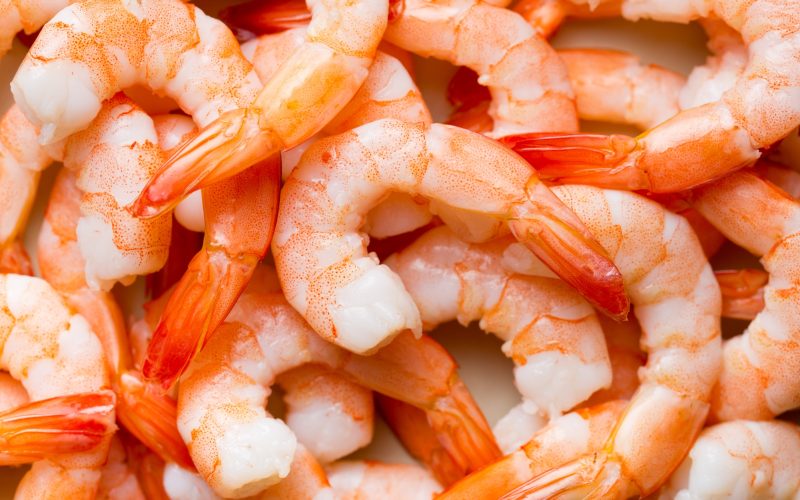When you think about types of prawns, the first thing that comes to mind is a fancy restaurant serving pink-hued crustaceans.
But prawns are more than simply a gourmet’s delight. They are intricate aquatic creatures that come in various varieties, each with their own special traits and flavor profiles.
If you enjoy eating prawns, you should become familiar with the varieties you typically eat and discover new types of prawns to try.
We’ll look at the top type of prawns consumed worldwide and offer various preparation suggestions for each.
Let’s go!
1. Brown Prawns
Brown prawns are one of the types of prawns, as their name suggests, brownish in hue with a gray undertone when raw, but when cooked, they turn the customary pink color.
These prawns are excellent for broth, fried rice, and dumplings and are widely used in fermented recipes.
They are typically six inches long and restricted to certain areas and nations. Compared to other prawns, they have a strong mineral flavor.
2. Tiger Prawns
Everyone has heard of tiger prawns which are also on our list of types of prawns. They have huge popularity in both the domestic and global markets.
The tiger prawns have a chewy, sweet feel and are very solid. They typically vary from 10 to 11 inches long and are one of the biggest prawns.
Popular foods include tiger prawns, especially in Asia.
3. White Prawns
These prawns are once more among the most often consumed types of prawns and are available everywhere. They taste somewhat sweet and are quite crunchy.
The white prawns are likewise about six inches long, and when cooked, they take on a yellowish and white tone.
Salads, pasta, and fries are some common recipes that use these prawns as an ingredient.
4. Spot Prawns
The spot prawns have an extremely soft texture, as their name suggests, and typically melt in the mouth without being chewed.
As a result, they are simple to eat and digest. This type of prawn is good for appetizers with sauces because of its sweet flavor. They are about seven and eight inches long.
5. Giant River Prawns
If you are from South Asia, you may be familiar with this type. The enormous river prawns are blue in color and big in size.
They have a sweet, creamy flavor and have a very delicate appearance.
The white flesh is present. South Asian curries and soups are among the favorite dishes with big river prawns.
6. Glass Prawns
Pink glass prawns have black patches close to their heads and legs. Their name comes from how delicate and fragile their shell is.
Glass prawns are ideal for boiled and fried recipes because they feel soft after cooking.
Compared to other types of prawns, they are typically less sweet and have a particularly chewy texture.
7. Banana Prawns
The banana Prawns have a yellow body and cream-colored, slightly yellowish legs with brown markings.
They got their name because of how much they resemble bananas.
Near the Australian continent, these types of prawns are well-known and have a highly sweet flavor.
They are modest in size, typically measuring up to 5 inches.
8. Rock Prawns
One of this group’s largest types of prawns is the rock prawn. The name of this variety comes from their extremely tough shells, which are challenging to remove!
Many times because of their size, people think they are lobsters.
Nevertheless, despite their size, rock prawns have a flavor comparable to other species and are extremely chewy and crunchy. The cooking options for the rock prawns are varied.
9. Pink Prawns
Lastly, the pink prawn is on our list of the most consumed types of prawns worldwide.
These varieties go well with sauces and are most frequently used to make appetizers.
They have a mildly sweet flavor and are extremely delicate and nutritious. They provide a substantial amount of protein but very little fat.
The pink prawns are little and frequently used in salads, fried appetizers, prawn omelets, and garnishes.








